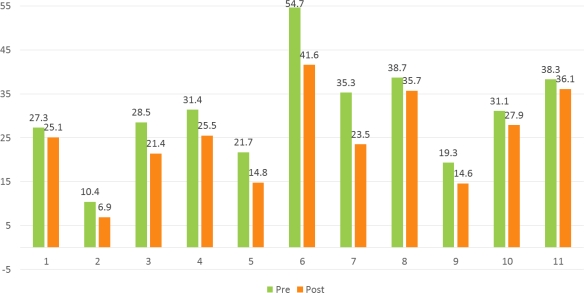Changes in Acceptances Patterns Under Share 35
University of Texas HSC, San Antonio, TX
UNOS, Richmond, VA.
Meeting: 2015 American Transplant Congress
Abstract number: 482
Keywords: Allocation, Liver transplantation
Session Information
Session Name: Concurrent Session: Liver Transplant Allocation Policy
Session Type: Concurrent Session
Date: Tuesday, May 5, 2015
Session Time: 4:00pm-5:30pm
 Presentation Time: 4:00pm-4:12pm
Presentation Time: 4:00pm-4:12pm
Location: Room 122-AB
The Share 35 policy was implemented June 2013 with intent of directing to livers to the sickest patients with the highest mortality and presumably shortest time to live. The rationale being that a wider pool of donor livers would allow for a timelier transplant. We sought to evaluate acceptance patterns of centers under this policy.
Methods: we compared Era 1 (pre policy 6/1/2012-5/31/2013) and Era 2 (post policy 8/1/2013-7/31/2014) periods around the implementation date of the share 35 policy (6/18/2013). We evaluated all offers for liver-only recipients. We excluded offers for refusal codes of patient transplanted, multi-organ, expedited placement. We included only offers for livers that were ultimately transplanted.
Results: In Era 1 there were 4809 offers for MELD score > 35 patients with 1071 acceptances (22.3%) and 10,141 offers and 1652 acceptances (16.3%) in Era 2 (p<0.0001). In Era 1 there were 42954 offers for MELD score < 35 patients with 4181 acceptances (9.7%) and 44137 offers and 3882 acceptances (8.8%) in Era 2 (p<0.0001). Acceptance rates for Status 1 recipients were not significantly different (14.7% vs 13.9%: p=.45). The lower acceptance rate persisted across all UNOS regions as shown below and was significantly less in Regions 2,3,4,5 and 7. The mean DRI was the same (1.3) for both eras for MELD scores > 35 acceptances and the same (1.4) for MELD <35 acceptances. 
Conclusion: The Share 35 policy has resulted in significantly more offers to patients with a MELD score > 35. Overall acceptance rates were significantly less compared to the same patient group prior to the policy implantation. The decreased donor acceptance rates with the new policy could reflect more programmatic selectivity.
To cite this abstract in AMA style:
Washburn K, Edwards E, Harper A. Changes in Acceptances Patterns Under Share 35 [abstract]. Am J Transplant. 2015; 15 (suppl 3). https://atcmeetingabstracts.com/abstract/changes-in-acceptances-patterns-under-share-35/. Accessed December 29, 2025.« Back to 2015 American Transplant Congress
